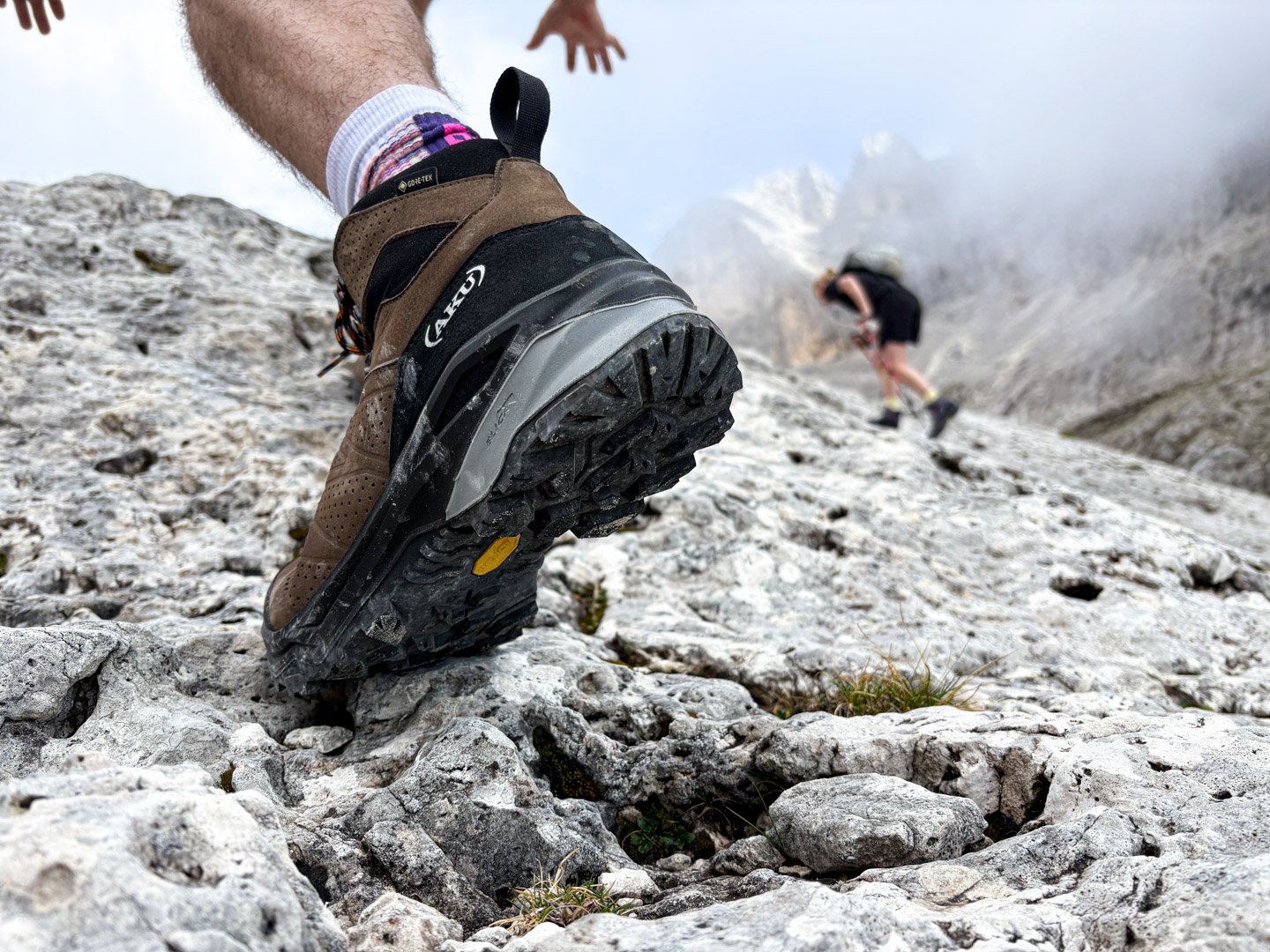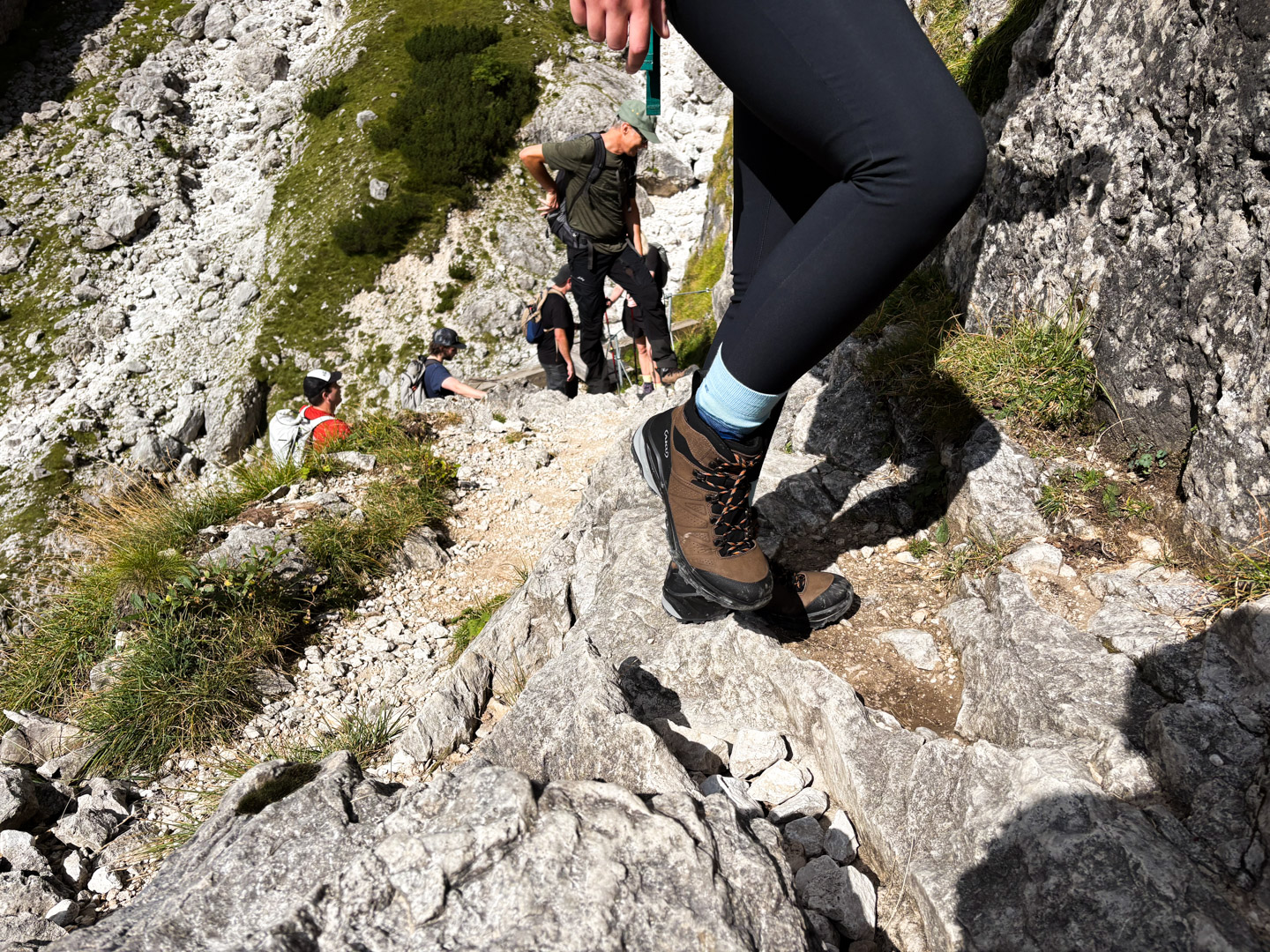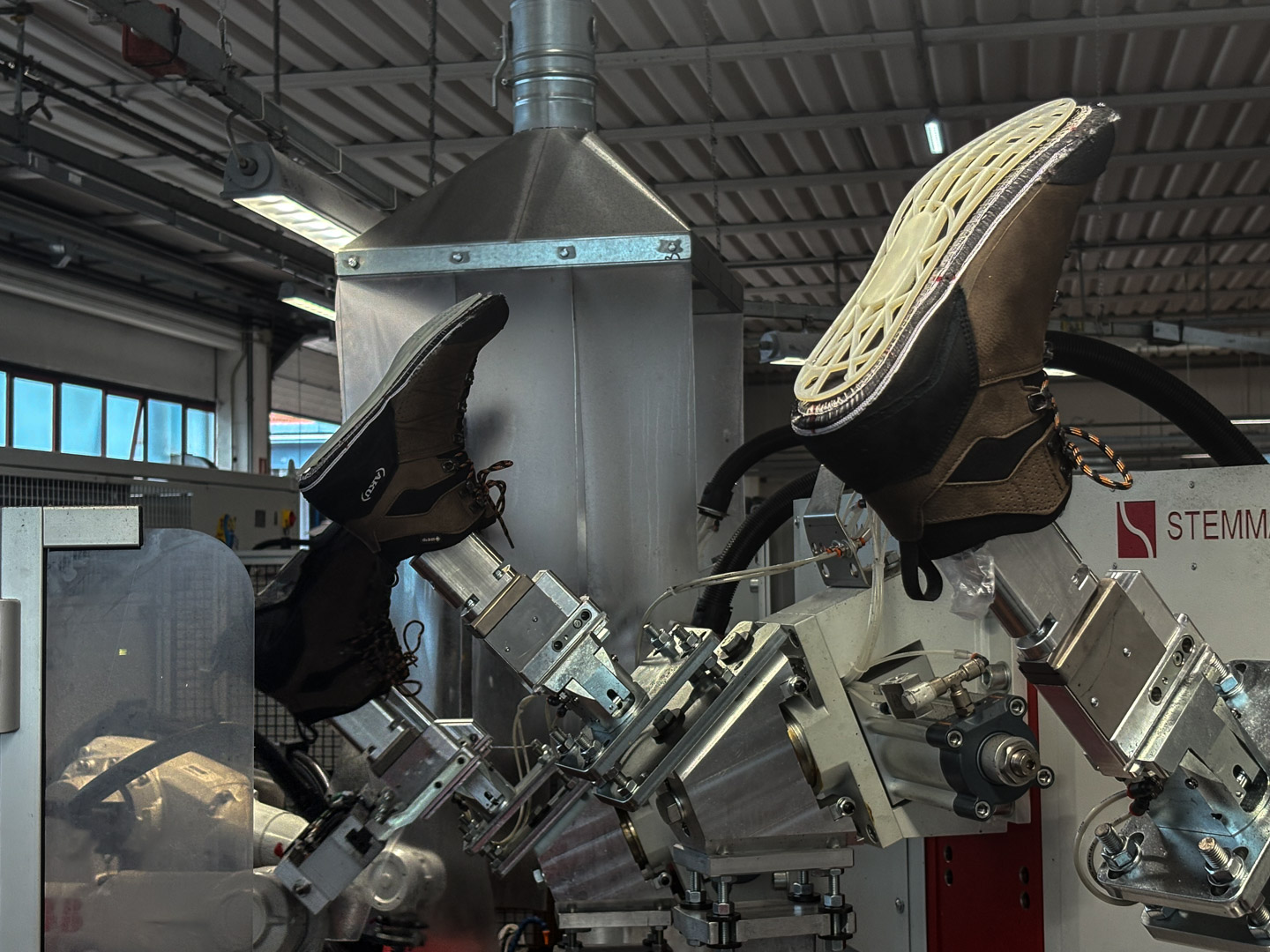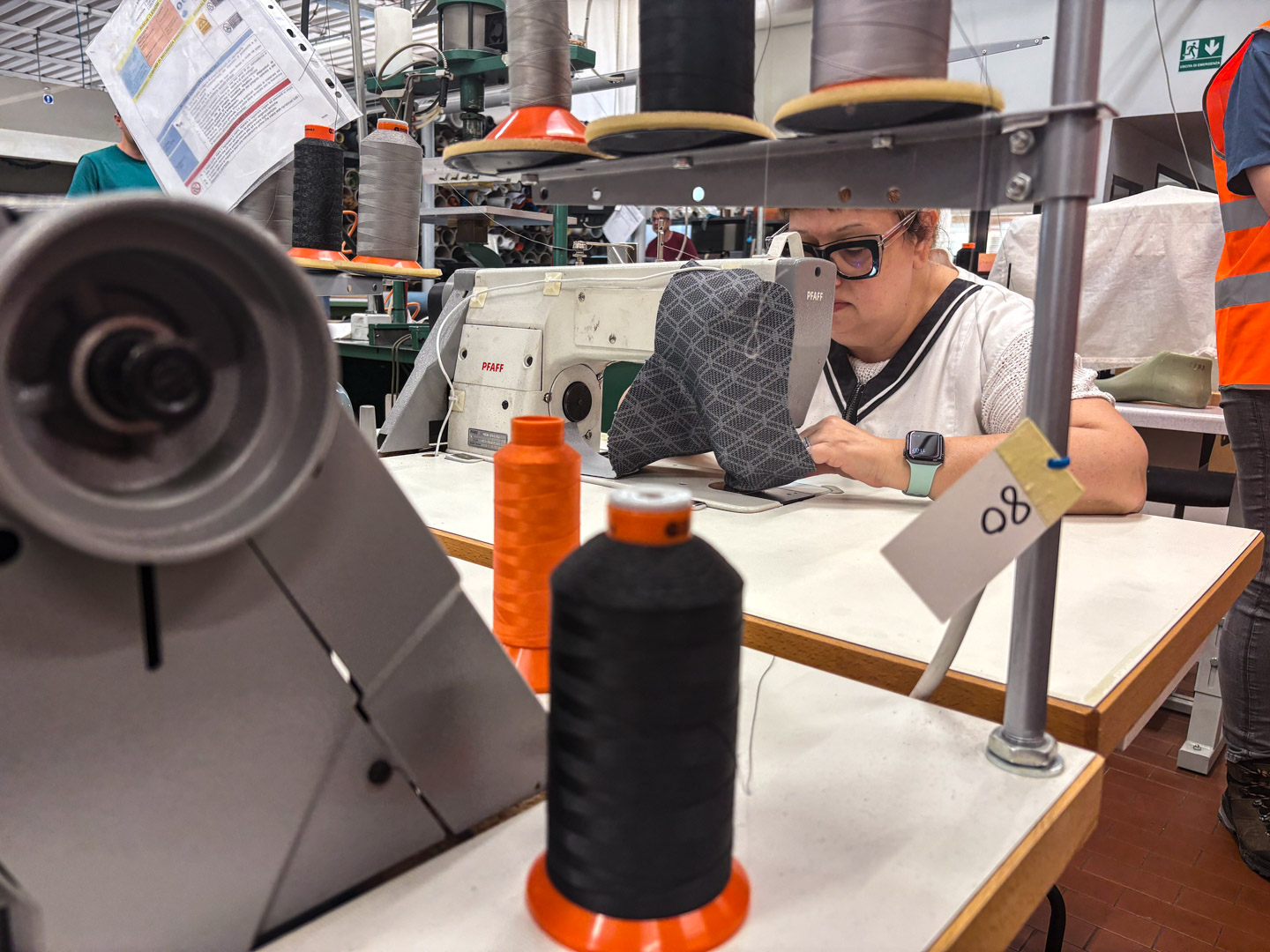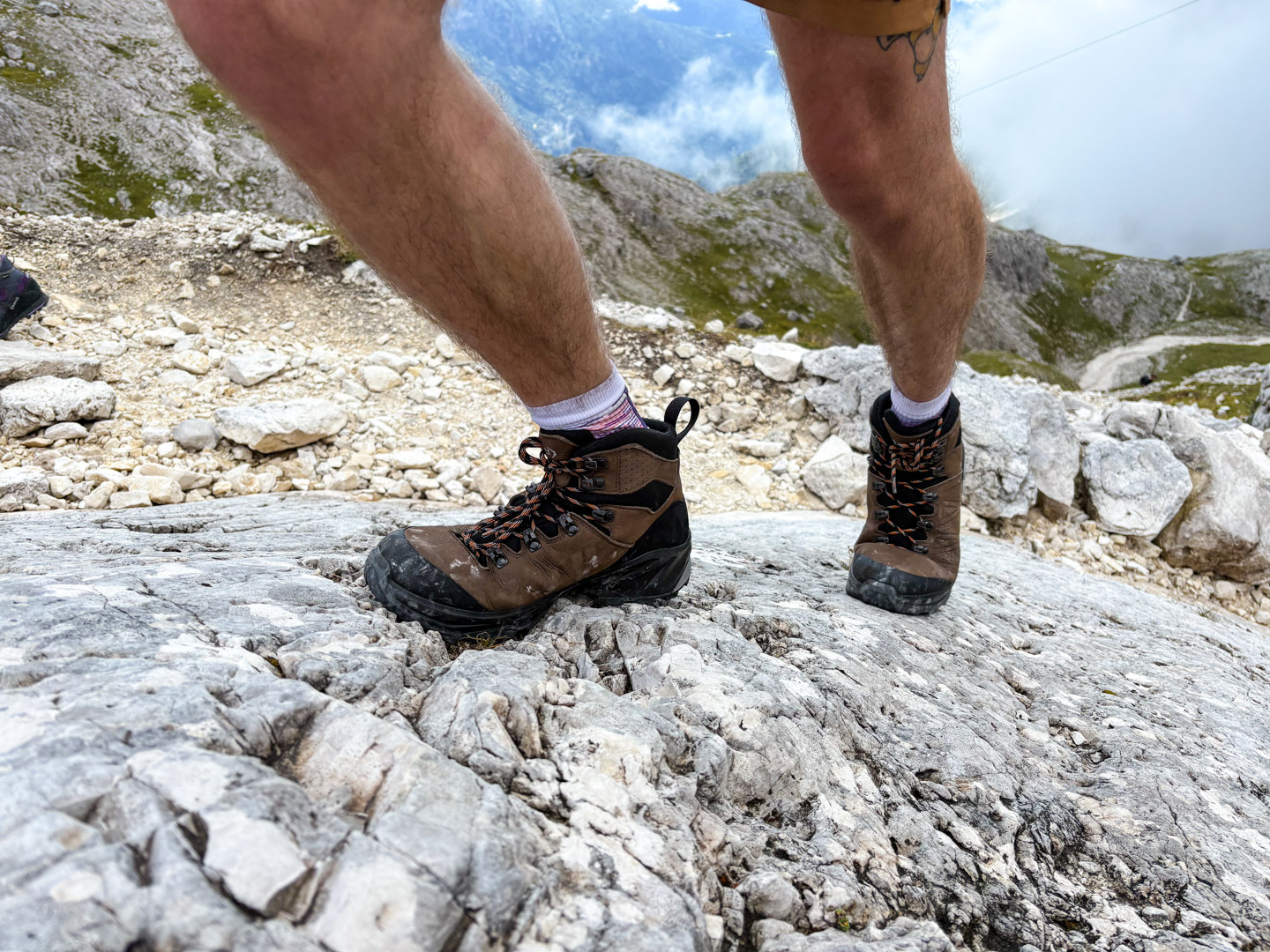The Aku Adapta NBK GTX, is, according to the brand, designed for easy trails. From my experience, I’d say that’s a fairly modest claim. I suppose it depends on what your definition of “easy” is — and given that Aku and its team are based in northern Italy, on the edge of the Dolomites, their idea of an easy trail is probably quite a tough one.
I’ve been using the boot, first on a long climb up switchback tracks and scree slopes to Rifugio Pradidali, which sits 2,278 metres above sea level, and subsequently while surveying routes for the Wales Peak Bagging guidebook I’m working on, and I’ve liked what I’ve seen.
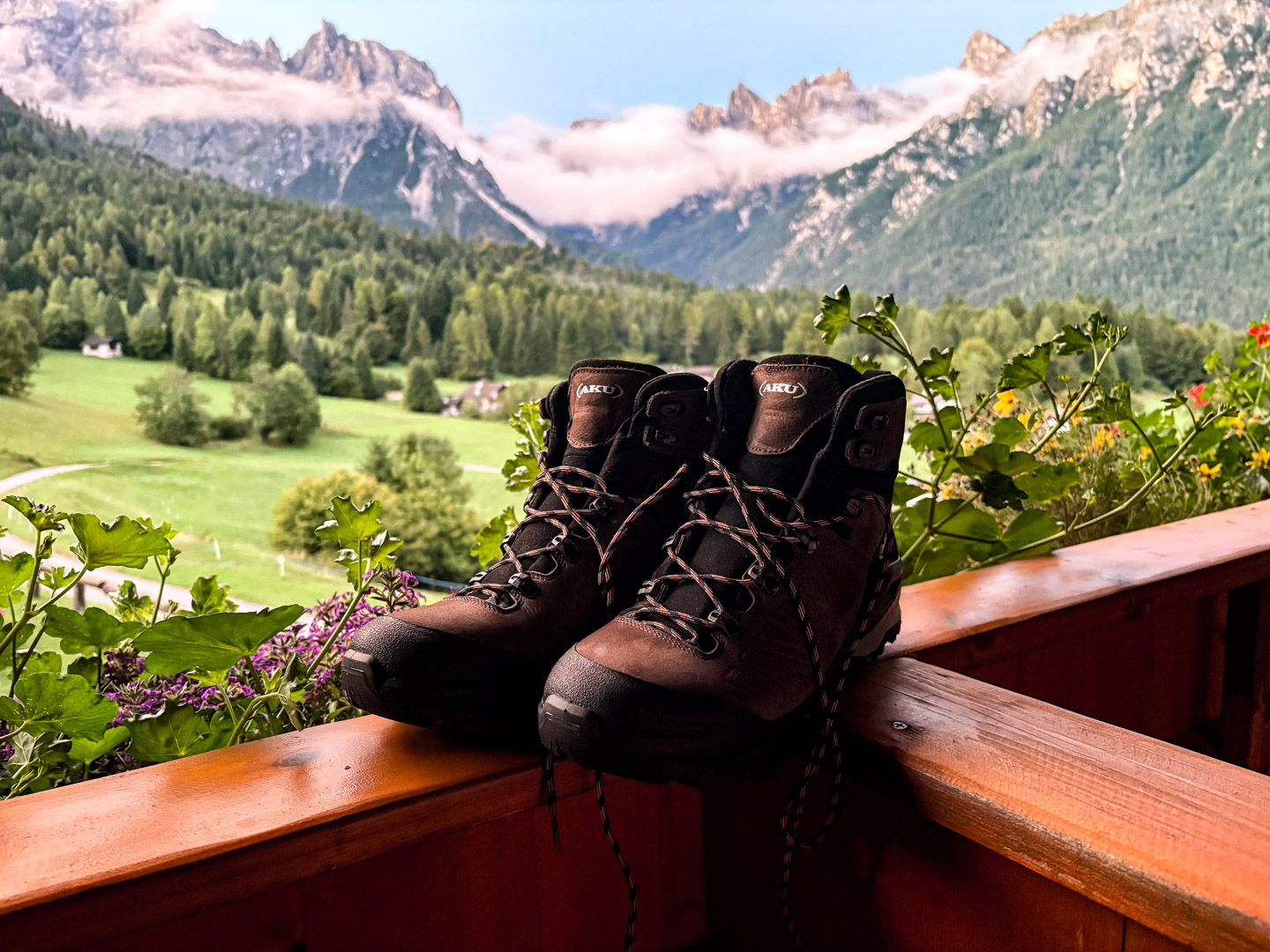
Aku Adapta: The Top Line
This is a reasonably light but sturdy boot that has the flex and comfort to support long distances, along with the kind of durability and underfoot protection I’d want from something designed for rocky trails. For me, it fits the bill perfectly for three-season hillwalking in the UK.
Buy the Aku Adapta NBK GTX: £210 at Aku.co.uk
Quality
Not only is this boot made entirely within Europe, but the majority of its manufacturing process takes place right next door to the room it was designed in, at Aku’s headquarters in Montebelluna, roughly 50 km north of Venice. Many of the materials, including the leather and metal components, also come from within a close radius of the headquarters – it’s a region that’s built around bootmaking.
I was invited to get an exclusive look at the process myself. Here’s a video I made that shows exactly what goes on in the construction of the Aku Adapta NBK GTX, as well as many of the other boots in the Aku line.
If you watched that video, you’ll see that the Adapta’s sole is attached using a PU injection process, all carried out by specialised machinery. This means that instead of gluing or stitching the midsole and outsole together, liquid PU is injected directly between the upper and the sole mould, creating a seamless bond as it sets. PU injection tends to result in a boot that keeps its structural integrity for a long time without losing its cushioning or shock absorption. The process is typically used for boots designed for high mileage and rugged terrain.
That PU injection also works nicely in conjunction with Aku’s unique last design – that’s the sculpted shape the boot is built around. And on that note, onto the fit.
The Fit
The moment I pulled it on, the Adapta felt noticeably different to most boots. The whole sole unit feels like it has a lot of shaping to it, with an upward curve to support the arch and a gentle rocker that encourages a smooth, rolling stride. This is Aku’s Elica Natural Stride System coming into play. Rather than being a flat or symmetrical platform, it’s asymmetrically shaped to mirror the natural form and movement of the human foot – from heel strike through to toe-off. They’ve designed specific versions of this for both men and women too.
I found these comfortable straight out of the box – from the valley bottom right up to the rifugio – and I didn’t encounter any hot spots or general discomfort. I haven’t had any issues in subsequent tests either. I think generally, if you have a fairly average-shaped foot, this should fit nicely. If you’ve got wider feet, maybe look into the Aku Trekker Lite Wide, which is quite similar. If your feet are narrow, something like the Rocket Mid DFS might suit better.
What the Aku Adapta NBK GTX Offers
I’ve found this hiking boot has the right levels of grip for on-trail hiking. It’s been reliable on all sorts of inclines, including gravel, mud and boulders. The sole compound is Vibram Megagrip, which I’ve generally found offers a good balance between stickiness and durability. Aku have a close relationship with Vibram, one that stretches back over thirty years.

